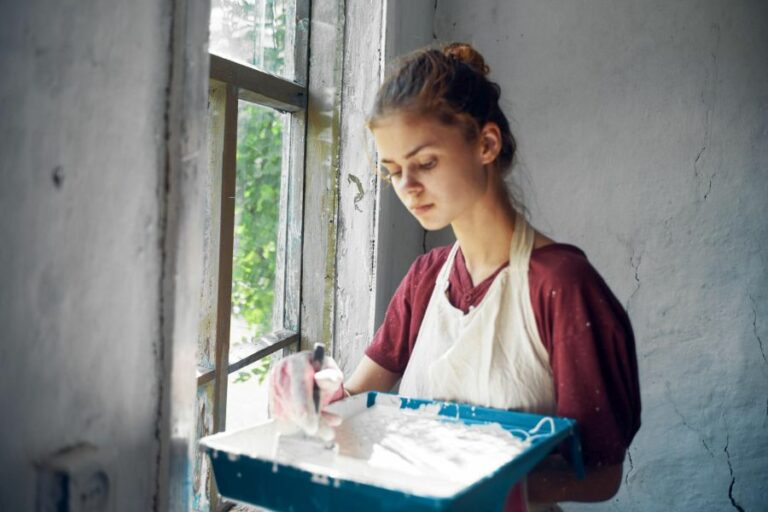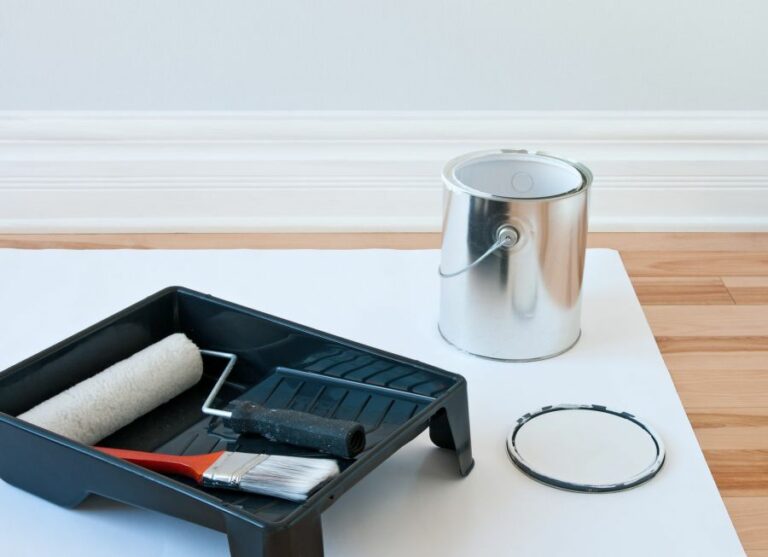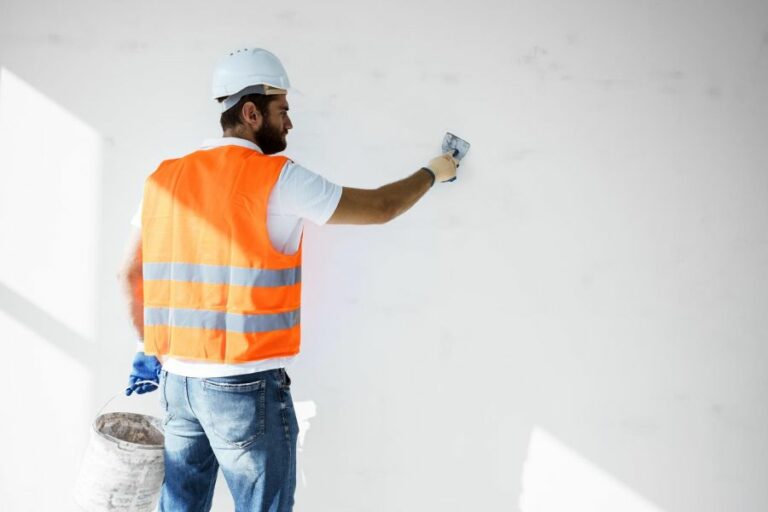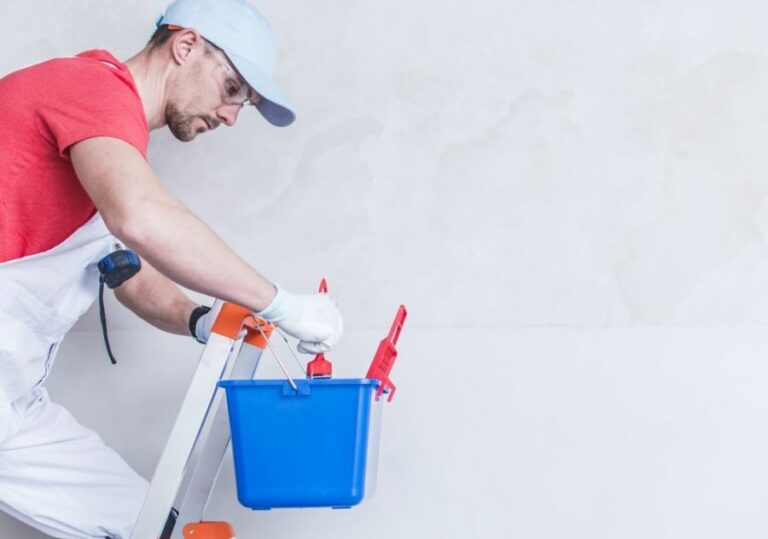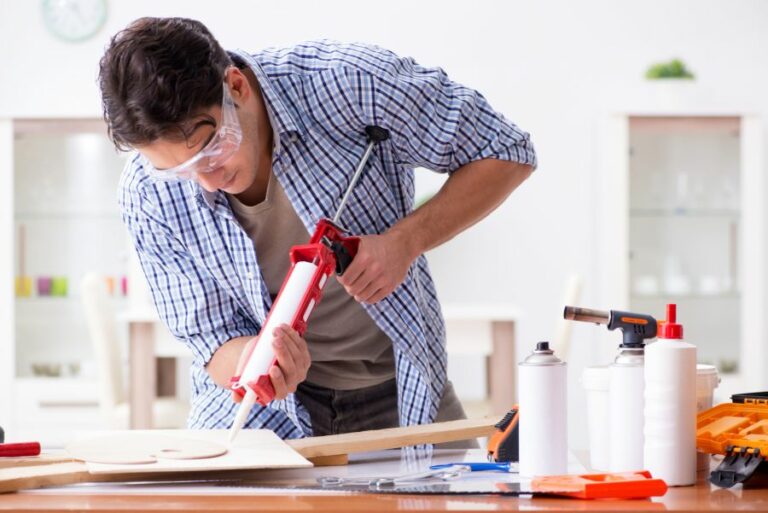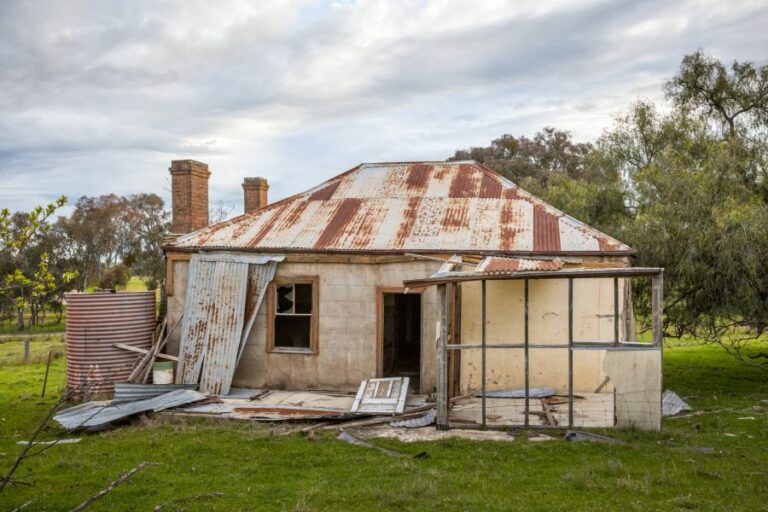Mildew Cleaning For Surface Preparation. What Pros Say
Mildew can be a real headache when it comes to surface preparation, especially if you’re looking to paint or apply any kind of coating. Not only is it unsightly, but it can also compromise the quality and durability of your work. Worry no more, as I am here to provide you with effective mildew-cleaning techniques to ensure a spotless and trouble-free surface.
Mildew cleaning for surface preparation:
Mildew cleaning for surface preparation involves identifying the fungus, using appropriate cleaning solutions like vinegar, baking soda, hydrogen peroxide, bleach, or commercial removers, and following safety measures. Preventing future mildew growth is essential, and repainting surfaces with mildew-resistant paint or additives can help.

Are you tired of stubborn mildew stains ruining your surfaces? Read on as we unravel the best mildew-cleaning techniques for effective surface preparation! Get ready to restore your surfaces to their former glory. Keep reading to explore our expert tips and tricks on banishing mildew for good!
Contents
- 1 Surface Preparation: Eliminate Mildew for a Clean Base
- 2 Effective Techniques for Removing Mildew from Surfaces
- 3 Pre-Painting Guide: Thoroughly Cleaning Mildew
- 3.1 • Identifying Mildew
- 3.2 • Gather the Necessary Supplies
- 3.3 • Prepare the Cleaning Solution
- 3.4 • Test the Cleaning Solution
- 3.5 • Apply the Cleaning Solution
- 3.6 • Scrub the Surface
- 3.7 • Rinse the Surface
- 3.8 • Dry the Surface
- 3.9 • Apply a Mildew-Resistant Primer
- 3.10 • Paint the Surface
- 3.11 • Additional Tips
- 4 Top Solutions for Cleaning Mold and Mildew
- 5 Preparing Wooden Surfaces: Removing Mildew Prior to Staining
Surface Preparation: Eliminate Mildew for a Clean Base
Mildew is a common issue that homeowners and facility managers encounter. This unwanted fungus thrives in damp and warm environments, and when left untreated, it can quickly spread and cause severe damage to surfaces.
• Identifying Mildew
Before determining the best method for mildew removal, it is essential to distinguish between mold and mildew. While both are types of fungi, their appearance, growth patterns, and the surfaces they affect may differ.
- Mildew is typically powdery or fluffy, with a gray or white color. It usually grows on flat surfaces, such as walls, ceilings, and the surfaces of furniture or clothing items.
- Mold has a more fuzzy or slimy texture and comes in various colors, including black, green, and brown. Mold may grow on virtually any surface, both indoors and outdoors.
Once you have confirmed the presence of mildew, you can proceed to cleaning methods that best suit the situation.
• Cleaning Solutions for Mildew Removal
Various cleaning solutions can help eliminate mildew from surfaces. Some popular options are:
– White Vinegar
White vinegar is a natural and affordable cleaning solution for mildew removal. Simply fill a spray bottle with undiluted vinegar and apply it to the affected area. Allow the vinegar to sit for at least one hour, then scrub the surface with a stiff brush or cloth.
– Baking Soda
Baking soda, when combined with water, creates a paste that effectively cleans and disinfects surfaces. Apply the paste to the mildewed surface, allow it to sit for 10-15 minutes, then scrub with a stiff brush and rinse with clean water.
– Hydrogen Peroxide
A 3% hydrogen peroxide solution can be an effective means of eliminating mildew. Spray the solution on the affected area, let it sit for at least 15 minutes, then scrub and rinse with clean water.
– Bleach
A diluted bleach solution (one part bleach to four parts water) can also be effective in killing mildew. However, it is essential to use caution with this method, as bleach can discolor surfaces and cause respiratory issues if not handled appropriately.
– Commercial Mildew Removers
Many commercial products are available for mildew removal, including sprays, gels, and wipes. These products are specifically formulated to combat mildew and may be more effective in some situations.
Always read and follow the directions on the product label for the best results.
• Safety Measures for Mildew Cleaning
When cleaning mildew, it is crucial to follow safety precautions to protect yourself and others:
- Wear gloves, goggles, and a face mask to minimize contact with irritating substances.
- Ventilate the area by opening windows and doors to help with chemical fume dissipation.
- Keep children and pets away from the cleaning area.
- Always follow the manufacturer’s instructions on cleaning solution use.
• Prevention Tips for Mildew Growth
After cleaning the mildew, take measures to prevent future growth:
- Ensure proper ventilation in kitchens, bathrooms, and other high-moisture areas.
- Use a dehumidifier in damp areas to reduce humidity levels.
- Clean and maintain gutters and downspouts to prevent water buildup around the foundation of the building.
- Regularly inspect and fix any leaks or areas of excessive moisture.
• Mildew and paint – When and How to Repaint
Once the mildew has been removed and the area properly cleaned, you may consider repainting the surface. It is essential to ensure the surface is completely dry before applying new paint.
Choose paint that is mildew-resistant to avoid future mildew growth. You can also use a paint additive that inhibits fungal growth.
• Conclusion
Mildew cleaning for surface preparation is essential for maintaining a healthy living environment and ensuring the durability of surfaces. By using appropriate cleaning solutions, safety precautions, and preventative measures, you can keep mildew at bay.
For additional information and guidance on mildew removal, consult the US Environmental Protection Agency‘s guidelines on mold and mildew cleanup.
Effective Techniques for Removing Mildew from Surfaces
Mildew is a type of fungus that grows on surfaces in damp and humid environments. It can be found in various places, including bathrooms, kitchens, and basements. Getting rid of mildew is essential, as it can cause health issues and damage the surfaces it grows on.
• Safety First
Before you begin, it is important to protect yourself from potential health hazards caused by mildew. Make sure to wear protective gloves, eyewear, and a mask to prevent any contact with or inhalation of mildew spores.
• Identify the Surface Material
The method for removing mildew depends on the type of surface it is growing on. Some common surfaces include tile, grout, wood, and fabric. Each material requires a different approach to treating mildew growth.
– Tile and Grout
One of the most common places for mildew to grow is in the grout between tiles, especially in bathrooms. To remove mildew from tile and grout, follow these steps:
- Create a cleaning solution: Mix one part bleach with three parts water in a spray bottle.
- Apply the solution: Spray the cleaning solution directly onto the affected areas and let it sit for 5 to 10 minutes.
- Scrub the area: Use a stiff brush (a toothbrush works well) to scrub the affected areas thoroughly.
- Rinse and dry: Rinse the area with clean water and then dry the surface with a clean towel.
– Wood
Mildew can also grow on wooden surfaces, such as furniture or walls. Here’s how to remove mildew from wood:
- Prepare a cleaning solution: Combine a cup of white vinegar with a gallon of warm water.
- Clean the area: Dip a soft cloth or sponge into the solution and gently clean the affected areas.
- Rinse and dry: Wipe the area with a clean, damp cloth to remove any residue, then dry the surface.
- Sand the wood: If necessary, lightly sand the affected area with fine-grit sandpaper to remove any remaining mildew stains.
– Fabric
Mildew can also grow on fabrics, such as clothing or upholstery. To remove mildew from fabric:
- Prepare a cleaning solution: Mix one cup of white vinegar with one cup of water.
- Test for colorfastness: Test the solution on a small, inconspicuous area to ensure it doesn’t cause any discoloration.
- Apply the solution: Use a cloth or sponge to gently dab the solution onto the affected area.
- Rinse and dry: Rinse the fabric with clean water and let it air dry in a well-ventilated area.
- Launder: If possible, wash the fabric according to the care instructions.
• Preventing Future Mildew Growth
Once you’ve successfully removed the mildew, it’s crucial to prevent its return. Here are some tips to keep mildew at bay:
- Maintain proper ventilation: Make sure that areas prone to moisture, such as kitchens and bathrooms, are well-ventilated.
- Use a dehumidifier: If you live in a humid climate or have a basement that’s prone to dampness, consider using a dehumidifier to regulate the moisture levels in your home.
- Routinely clean at-risk areas: Regularly clean areas that are susceptible to mildew growth, such as showers and sinks.
- Dry wet items immediately: Do not leave wet clothing or towels lying around; make sure to dry them as quickly as possible.
- Control humidity: Keep humidity levels in your home below 60% to discourage mildew growth.
By following these steps, you’ll be well-equipped to tackle and prevent mildew growth on various surfaces. For additional information on mold and mildew removal, visit the United States Environmental Protection Agency’s guidelines on the subject.
Step | Instructions |
|---|---|
1 | Put on gloves and a face mask to protect yourself from the mildew spores. |
2 | Prepare a cleaning solution by mixing 1 cup of bleach with 1 gallon of water. |
3 | Use a stiff brush or sponge to scrub the mildewed area with the bleach solution, ensuring the surface is well-saturated. |
4 | Let the bleach solution sit on the surface for 5-10 minutes, allowing it to penetrate and kill the mildew. |
5 | Rinse the surface thoroughly with clean water to remove the bleach solution and any remaining mildew. |
6 | Dry the surface completely with a clean cloth or by allowing it to air dry. |
7 | Take steps to prevent mildew from returning, such as improving ventilation in the area or using a dehumidifier to reduce moisture levels. |
Pre-Painting Guide: Thoroughly Cleaning Mildew
Mildew is a common problem that occurs when moisture accumulates on various surfaces. It can cause damage to the surfaces, including walls and ceilings, and must be cleaned before painting.
• Identifying Mildew
Mildew is typically characterized by a thin, powdery or fluffy growth on surfaces. It can appear in various colors, such as white, gray, or black. Recognizing mildew is essential, as it will dictate the appropriate cleaning method.
• Gather the Necessary Supplies
To clean mildew efficiently, collect the following items:
- Gloves
- Protective eyewear
- Respirator mask
- Bucket
- Water
- Bleach
- TSP (trisodium phosphate)
- Mild detergent
- Scrub brush
- Sponge
- Cloth or towel
Always exercise safety precautions by wearing gloves, protective eyewear, and a respirator mask to protect yourself from the chemicals and potential mold spores.
• Prepare the Cleaning Solution
When cleaning mildew, stability and consistency play an essential role in ensuring success. A tested and approved solution for mildew removal is the combination of three parts water and one part bleach. Add a tablespoon of TSP and a few drops of mild detergent to the solution.
This mixture will effectively eliminate mildew while ensuring the surface is suitable for the upcoming paint job.
For additional resources, the Environmental Protection Agency offers detailed guidelines on mold and mildew cleaning.
• Test the Cleaning Solution
Before applying the solution to the entire affected area, perform a spot test on a small, inconspicuous section of the surface. This will confirm that the cleaning solution will not damage the surface, leading to further issues.
Apply the solution to the test area, scrub lightly with a sponge or cloth, and rinse with water. If no adverse effects occur, proceed to the next step.
• Apply the Cleaning Solution
Using a sponge or cloth, apply the cleaning solution to the mildewed surface. Start at the top and work your way down, as this will prevent the solution from dripping and causing streaks.
• Scrub the Surface
Using a scrub brush or sponge, thoroughly scrub the affected area in a circular motion. Focus on removing mildew growth and any dirt or debris present. Persistent mildew may require additional applications of the cleaning solution and scrubbing.
• Rinse the Surface
Once the mildew has been removed, rinse the surface with clean water. A cloth or sponge can be used to wipe away the cleaning solution, ensuring no residue remains.
If mildew is still present, repeat the cleaning process. In some cases, stubborn mildew might require stronger cleaning products or professional assistance.
• Dry the Surface
It is crucial to let the surface dry completely before moving on to the painting process. Use a dry cloth or towel to remove excess moisture, then allow the area to air dry. Depending on the climate and ventilation, this may take anywhere from a few hours to a couple of days.
• Apply a Mildew-Resistant Primer
After the surface is completely dry, apply a mildew-resistant primer to help prevent future mildew growth. Several primers on the market are designed specifically for mold and mildew resistance, so choose one that fits your needs and budget.
• Paint the Surface
Once the primer has dried, proceed with painting using your preferred paint type and color. Keep in mind that some paints include mildew inhibitors, which can further protect the surface from future issues.
• Additional Tips
- Regularly check your walls, ceiling, and other surfaces for signs of mildew.
- Address any moisture problems such as leaks, poor ventilation, or high humidity to prevent mildew growth.
- Clean mildew as soon as you notice it to prevent its spread and potential damage.
By following these steps, you will be well-equipped to clean mildew before painting, ensuring a successful and long-lasting paint job. Remember to prioritize your safety when handling cleaning chemicals and always address moisture issues to prevent mildew recurrence.
Step | Description |
|---|---|
1 | Identify the affected area(s) with mildew. |
2 | Prepare a cleaning solution by mixing one part bleach with three parts water. |
3 | Wear proper protective equipment, such as gloves, goggles, and a mask. |
4 | Apply the bleach solution to the mildew-affected area(s) using a sponge, brush, or spray bottle. |
5 | Allow the bleach solution to sit on the surface for at least 10 minutes, ensuring that the surface remains wet during this time. |
6 | Scrub the surface using a stiff bristle brush to remove the mildew. |
7 | Rinse the surface thoroughly with clean water, and allow it to dry completely before painting. |
Top Solutions for Cleaning Mold and Mildew
Mold and mildew can be a nuisance to homeowners, affecting various surfaces such as walls, tiles, fabrics, and more.
• Understanding Mold and Mildew
Before we dive into solutions, it’s essential to understand what mold and mildew are, as well as the differences between them. Mold is a type of fungus that grows in damp, humid conditions and can appear in various colors, such as black, green, or white.
Mildew is a type of mold, and it typically appears in a white or gray powdery texture on surfaces. Mold and mildew can cause potential health risks, including allergies, respiratory issues, and irritations; hence, it’s crucial to clean them as soon as they appear.
• Natural Cleaning Solutions
– Vinegar
White distilled vinegar is a common and highly effective natural cleaning solution for mold and mildew. With its high acidity, vinegar can kill over 80% of mold species.
Recommended steps:
- Fill a spray bottle with white distilled vinegar.
- Spray the vinegar onto the mold and mildew-affected areas. Wait for roughly one hour.
- Use a brush or cloth to gently scrub the surface.
- Rinse the surface with water and let it dry.
– Baking Soda
Baking soda is another natural and safe cleaning solution for mold and mildew. It acts as a mild abrasive, allowing you to scrub mold away without causing damage to surfaces.
Recommended steps:
- Mix one spoon of baking soda with water in a spray bottle until dissolved.
- Spray the solution onto the mold and mildew-affected areas.
- Use a brush or cloth to scrub the surface.
- Rinse with water and spray the surface lightly with the baking soda solution once more.
- Wipe the area with a clean cloth and allow it to dry.
– Tea Tree Oil
Although slightly more expensive than other natural solutions, tea tree oil is a highly effective and non-toxic option to combat mold and mildew.
Recommended steps:
- Mix one teaspoon of tea tree oil with one cup of water in a spray bottle.
- Apply the solution to the mold and mildew-affected areas.
- Let the solution sit without rinsing.
- Wipe the area with a damp cloth to remove any residue.
• Commercial Cleaning Solutions
– Bleach
Bleach is a popular and effective commercial cleaning solution used for mold and mildew removal on non-porous surfaces. However, it’s important to note that bleach can emit strong fumes and should be used in a well-ventilated area while wearing protective gloves.
Recommended steps:
- Mix one part bleach with three parts water in a spray bottle.
- Apply the solution to mold and mildew-affected areas.
- Allow the bleach solution to sit for at least 10-15 minutes.
- Scrub the area with a brush or cloth.
- Rinse with water and let the surface dry.
– Hydrogen Peroxide
Hydrogen peroxide is another excellent commercial cleaning solution for mold and mildew removal, capable of killing different species of mold on various surfaces.
Recommended steps:
- Pour a 3% concentration of hydrogen peroxide into a spray bottle.
- Apply the solution to mold and mildew-affected areas and let it sit for at least 10 minutes.
- Scrub the area with a brush or cloth to remove mold and stains.
- Rinse the surface with water and allow it to dry.
Keep in mind that certain surfaces may require specialized cleaning products. For mold removal on fabrics and textiles, consider using EPA-registered fungicides.
• Preventing Mold and Mildew Growth
To avoid the recurrence of mold and mildew, it’s important to take preventive measures:
- Maintain proper ventilation in your home, especially in areas prone to dampness, such as bathrooms and basements.
- Regularly clean surfaces and upholstery, ensuring they are thoroughly dried.
- Use dehumidifiers to maintain a low humidity level in your home.
- Address water leaks and plumbing issues promptly.
In conclusion, there are various natural and commercial solutions available to clean mold and mildew effectively. Always ensure that you address the root causes of mold and take necessary preventive measures to keep your living space safe and healthy.
Product / Ingredient | Advantages |
|---|---|
White Vinegar | Natural, non-toxic, effective in removing mold and mildew |
Baking Soda | Non-abrasive, natural, kills mold and absorbs moisture |
Hydrogen Peroxide | Powerful anti-fungal and anti-bacterial, removes stains |
Bleach | Quickly kills mold on non-porous surfaces, but may not remove stains |
Tea Tree Oil | Natural, kills mold and mildew, leaves a fresh scent |
Ammonia | Effectively kills mold and mildew, needs thorough rinsing |
Preparing Wooden Surfaces: Removing Mildew Prior to Staining
Mildew, a type of fungus, can grow on various surfaces, including wood. If not treated, it can cause damage and affect the appearance of your wooden furniture, decking, or flooring. In order to properly stain wood and achieve a smooth, attractive finish, you must effectively remove any mildew first.
• Safety Measures When Removing Mildew
Before proceeding with the removal of mildew from wood, it’s vital to take appropriate safety measures. Wear a mask, rubber gloves, and goggles to protect yourself from exposure to mildew spores and other irritants.
Ensure you work in a well-ventilated area to minimize the risk of breathing in harmful fumes from cleaning solutions.
• Identification and Assessment of Mildew Growth
Begin by examining the wood to confirm the presence of mildew. It usually appears as a thin, superficial layer of fungal growth on wood, often black or greyish in color.
If the mildew has penetrated deeper into the wood, it could indicate a more severe problem that may require more aggressive treatment or even wood replacement.
• Choosing the Right Cleaning Solution
Select the appropriate cleaning solution to effectively remove mildew from wood. A few popular options you can consider include:
- Bleach Solution: Mix one part bleach with four parts water. Make sure you use bleach that is specifically designed for wood surfaces.
- Vinegar Solution: White vinegar is a natural and effective option for removing mildew. Mix equal parts water and vinegar.
- Commercial Wood Cleaner: There are a variety of commercial wood cleaners available on the market, specifically designed for removing mildew.
Always ensure to read and follow the manufacturer’s recommendations on the use of any product.
• The Removal Process
– Step 1: Brush Off Mildew
Using a stiff-bristled brush, gently scrub the wood surface to remove loose mildew spores. Be careful not to scratch or damage the wood during this process.
– Step 2: Apply the Cleaning Solution
Generously apply your chosen cleaning solution onto the wood surface using a soft-bristled brush or a sponge. Allow the solution to sit for at least 10 minutes or as per the manufacturer’s instructions.
– Step 3: Scrub the Wood
Using a soft-bristled brush or sponge, scrub the wood surface thoroughly, paying extra attention to any areas with more severe mildew growth.
– Step 4: Rinse and Dry
Rinse the wood with clean water to remove any residual cleaning solution. Dry the wood as quickly as possible, either by using a clean towel, a squeegee, or by exposing it to sunlight.
– Step 5: Sand the Wood (if necessary)
If the wood surface still appears discolored or uneven after drying, gently sand the affected areas using fine-grit sandpaper. Clean the wood surface again to remove any dust before proceeding to staining.
• Staining the Wood
Now that the wood is clean and mildew-free, follow these steps to stain the wood:
- Choose an appropriate high-quality wood stain based on your preferences and the desired finish.
- Apply the wood stain using a brush or rag, following the wood grain direction.
- Allow the stain to dry completely according to the manufacturer’s instructions.
- Apply a protective finish, such as a wood sealer or varnish, to prevent future mildew growth and protect the wood from moisture and damage.
• Preventing Future Mildew Growth
Here are some tips to prevent mildew growth on your wood surfaces:
- Ensure proper ventilation in the area where the wood is placed.
- Keep the wood surfaces clean and moisture-free.
- Apply a protective finish to the wood surfaces to create a barrier against moisture.
- Inspect your wood items regularly and address any signs of mildew growth immediately.
In summary, removing mildew from wood is essential for achieving a smooth and attractive stain finish. By following these steps and taking preventive measures against future mildew growth, you can preserve and maintain the beauty of your wooden items for many years to come.
Step | Description |
|---|---|
1 | Wear proper protective gear such as gloves, masks, and goggles. |
2 | Prepare a solution of one part bleach to four parts water. |
3 | Apply the bleach solution to the mildewed area using a sponge or brush. Let it sit for up to 15 minutes. |
4 | Scrub the area with a scrub brush to remove any remaining mildew. |
5 | Rinse the area thoroughly with water to remove any bleach residue. |
6 | Allow the wood to dry completely before staining. |
7 | Proceed with staining the wood as desired. |

